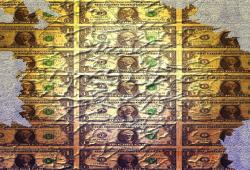
India was a founder member of the General Agreement on Trade and Tariffs (GATT), which eventually became the World Trade Organization in 1995. So, in a sense India despite its early export pessimism, has always been a frontline supporter of international trade and the free flow of goods and services. The reforms of 1991 were induced by a currency crisis. Since then India’s trade openness has dramatically risen. Trade openness is measured as imports plus exports as a percentage of GDP. It is now at 50 percent which is even higher than traditional free trade champions like the USA. India was and still is an enthusiastic supporter of the multilateral trade negotiations under the WTO umbrella. It strongly supported the WTO launch of the Doha round of negotiations in 2001, which aimed for further trade liberalisation and improving the trading prospects of developing nations. After nearly 15 years the Doha round failed to reach a conclusion due to a gridlock of unsettled issues involving subsidies in agriculture by Western countries, and tariff reduction for manufactured goods.
As for the group of ten ASEAN countries, with whom India signed an FTA in 2010, imports went up only slightly in the ten years from 2007 to 2017. So, it should be clear, that while the primary purpose of FTAs is to increase trade flows, trade agreements act as pressure for domestic economic reforms. India seems to embark on strong reforms only when there is external pressure, as is most evident from the IMF induced conditionalities following the 1991 crisis.
Sensing the fatigue in multilateral negotiations, India embarked on ambitious bilateral and regional trade agreements with its trading partners. Indeed, in the past 20 years we signed 14 such new agreements, including comprehensive economic cooperation agreements with countries like Singapore, Japan and Korea which go much beyond conventional treaties, and facilitate investment flows as well. This also is in line with India’s Look East policy initiated by Prime Minister Narasimha Rao, and enhanced by almost every successive PM. Prime Minister Modi upgraded it to an Act East policy, with tangible action like road connectivity through the Trilateral Highway project, and promoting Exim Bank funded investments in the less developed nations of South East Asia.
India’s experience with Free Trade Agreements (FTA’s) especially since 2000, show that imports have not really surged from our partner countries. As pointed out by the eminent trade theorist, and former Vice Chairman of Niti Aayog, Arvind Panagariya says that imports from FTA partners are barely 12 percent of all imports in 2017, and have actually slightly fallen since signing. In fact, India’s combined imports from non-FTA countries like Saudi Arabia, UAE and China are far greater than imports from FTA countries. As for the group of ten ASEAN countries, with whom India signed an FTA in 2010, imports went up only slightly in the ten years from 2007 to 2017. So, it should be clear, that while the primary purpose of FTAs is to increase trade flows, trade agreements act as pressure for domestic economic reforms.
India seems to embark on strong reforms only when there is external pressure, as is most evident from the IMF induced conditionalities following the 1991 crisis. What is less well known is that India had to dismantle its quantitative controls on imports only after it lost a case in the WTO in 1999. More recently, India lost another major case at the WTO about the illegality of its various export incentive schemes. This case was filed as a complaint by the U.S., which is otherwise a friendly trading partner. India will now have to dismantle the Manufacturing Export Incentive Scheme and several others as a result of the WTO ruling. That these schemes were skating on thin ice was known to commerce ministry officials, who had informally warned domestic industry to be ready and learn to compete without the prop of export subsidies.
It is true that industry, big and small is fearful that RCEP allows Chinese goods to enter India even more easily. But this fear can easily be addressed with specific provisions in the treaty...
Which brings us to the Regional Comprehensive Economic Cooperation (RCEP), an agreement initiated nearly eight years ago. This is a grouping of 10 ASEAN countries with whom we already have an FTA, plus six others, including China. It was earlier seen as a Beijing-led initiative to counter the Trans Pacific Partnership (TPP), a 12 members ambitious trade deal launched by President Obama. The TPP goes much beyond trade, bringing in issues of labour and environment. It includes special duty-free access to firms and complete value chains who choose to locate in TPP countries. Since China was pointedly kept out of TPP, it was seen as a strategic counter to China’s hegemony in trade. But President Trump has walked out of TPP and hence it is dead on arrival. Thus, RCEP too, as a counter, lost steam. So we thought. But actually, the other 15 members are extra gungho, led especially by Australia. This grouping has nearly half the world’s population and two fifth of GDP and trade. It’s a powerful economic bloc.
Since it was launched in 2012, RCEP was never a political issue in any election or for any political party. So, it is strange that there was such a big furore just a few months before it was to be signed. It is true that industry, big and small is fearful that RCEP allows Chinese goods to enter India even more easily. But this fear can easily be addressed with specific provisions in the treaty, better enforcement of border controls, and most importantly backloading complete duty-free access all the way to 25 years in the future. As for fear of dairy imports, the treaty allows quantity restriction on duty-free imports.
For us to become more competitive globally there is a long list of domestic reforms, which can get a fillip by joining RCEP. For instance, we can reduce the burden of indirect taxes (GST) by bringing down multiple rates to 12 percent and broad basing it.
The true significance of RCEP is that it will progress us from Look East, Act East to Embrace East. It will enable Indian firms, especially small firms to be part of global value chains. It will increase FDI. China is committed to import 12 trillion dollars of goods and services in the next five years. This represents a huge opportunity for Indian firms. We have to move away from a defensive posture to the more aggressive aim of tapping foreign markets. For us to become more competitive globally there is a long list of domestic reforms, which can get a fillip by joining RCEP. For instance, we can reduce the burden of indirect taxes (GST) by bringing down multiple rates to 12 percent and broad basing it. We should switch to instant electronic refunds of GST to exporters. We can reduce logistics costs, by encouraging the cluster approach, especially relevant for sectors like textiles, leather, auto ancillaries, electronics or agro processing. We can have such clusters around port cities. We can explore services exports especially of software to this non-English speaking part of the world. Finally, one big reform is to reduce the overvaluation of the exchange rate which hurts both exports and domestic industry’s competitiveness. Trade and commerce links bring investment, technology and knowhow. Prime Minister Modi said in Thailand that commerce and culture are the foundations of our engagement, and it is particularly relevant for the Look and Act East policies.
(Dr. Ajit Ranade is an economist and Senior Fellow, Takshashila Institution)







